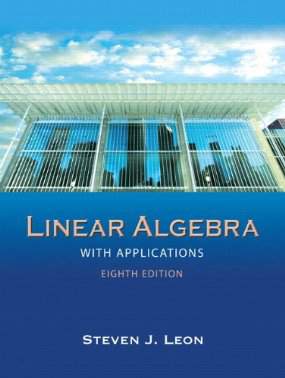Connecting...

This is a quick preview of the lesson. For full access, please Log In or Sign up.
For more information, please see full course syllabus of Linear Algebra
For more information, please see full course syllabus of Linear Algebra
Linear Algebra Orthonormal Bases in n-Space
Lecture Description
This video will talk more about vectors in a given vector space, and more specifically how to tell if they are orthogonal or not to each other. Vectors orthogonal to other vectors play an important role in applications of linear algebra; be sure you fully understand this idea especially if you’re in the sciences. This topic alone seems odd and might not strike you as anything useful, but detecting orthonormality in a vector space is a kind of ‘helper’ method to more complex topics. In the following videos we’ll discuss more properties pertaining to this topic of orthonormal bases.
Bookmark & Share
Embed
Share this knowledge with your friends!
Copy & Paste this embed code into your website’s HTML
Please ensure that your website editor is in text mode when you paste the code.(In Wordpress, the mode button is on the top right corner.)
×
Since this lesson is not free, only the preview will appear on your website.
- - Allow users to view the embedded video in full-size.
Next Lecture
Previous Lecture










































 Answer Engine
Answer Engine




2 answers
Last reply by: Elias Assaf
Thu Nov 14, 2013 3:00 AM
Post by Elias Assaf on November 13, 2013
Hi, you're videos are absolutely top, top, top class.
Just a little thing though, in you're first example, if you take the dot product of U1 and U2 you get
(-2,0,2) which is not orthogonal. Or have I missunderstood anything?
Thanks.
Elias
2 answers
Last reply by: Josh Winfield
Thu Apr 3, 2014 11:15 PM
Post by Christian Fischer on November 5, 2013
Hi Raffi, Great lecture - it helped me a lot!
I might be mistaking but at 27.15 (minutes.seconds) when you write v2=(-1,2,1) Did you really mean ((-1/3),(2/3),(-1/3))?
P.S. I got all year replies on multivariable calculus. Thank you so much! I'll get back to you later with respect to that :)
Have a great day
Christian
0 answers
Post by Manfred Berger on June 20, 2013
I have actually never seen the techniques you used in example 2 before. I'm quite sure this could be modified to solve arbitrary homogeneos systems.